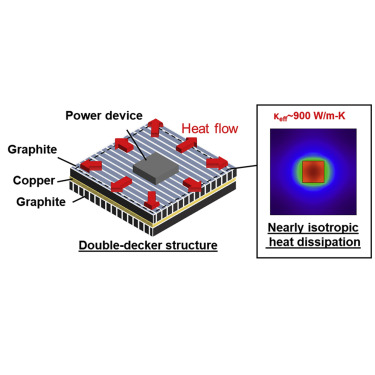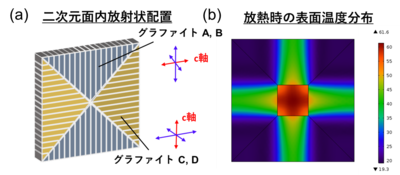


东京大学:实现功率半导体的高效散热:散热器
-用于处理高电压和大电流的功率半导体-
东京大学研究生院
盐见纯一郎教授
课题组针对高电压大电流的功率半导体开发了高效散热结构。
它可以用作散热器,夹在加热元件和加热器之间以扩散热量。
用于功率半导体
高效散热结构
这是通过使用相对便宜的石墨和执行三维热流控制来实现的。
实现高散热效率和低成本
下一代功率半导体的高度集成,
预计这将导致成本降低。
高导热/散热器:
随着功率半导体的产量增加和小型化
需要比通常使用的铜具有更高热导率的散热器。
石墨的导热系数:
石墨的导热系数为
在面内方向高,
因为它在垂直于平面的方向是低的
石墨不能用于“需要各向同性散热的功率半导体”。
研究组:
我们设计了一种通过热流控制使石墨具有各向同性和高导热性的方法。
导致,
两种不同取向的石墨材料在三维空间中堆叠的结构
结果发现,它的散热性能提高了 1.5 倍以上。
散热实验结果:
使用它,在三维空间中进行了器件散热实验。
散热实验中的导热系数
在 900 瓦/米开尔文时,
它表现出与各向同性材料相同的性能。
现有铜的热导率保持在 400 瓦/米开尔文。
新开关
通过使用石墨的三维热流控制实现超高性能散热器
-有望用于功率半导体的高效散热-
公告点:
◆ 石墨的热导率在面内方向高,垂直方向低。
因此,很难“使用需要各向同性散热的功率半导体(注 1)进行热管理”。
◆ “异向石墨材料”进行立体加工组装。
此外,它与铜一体烧制并接合。
因此,我们成功地实现了各向同性散热。
◆ 进行了散热测试以模拟安装。
实现了“相当于导热系数为 900 W/m-K 的各向同性材料的非常高的散热性能”。
https://www.t.u-tokyo.ac.jp/foe/press/setnws_202110221318571011060492.html
Ultra-high-performance heat spreader based on a graphite architecture with three-dimensional thermal routing
Summary
To meet the increasing demand for highly efficient heat dissipation in power electronics,
a heat spreader
that has significantly greater isotropic thermal conductivity than the commonly used copper (400 W/m·K) should be developed.Although graphite
is a promising candidate because of its high basal-plane thermal conductivity,its application is restricted by its low c axis thermal conductivity.
This issue can be resolved
by transforming graphite into an isotropic thermal conductor by building a structure that can effectively route heat in all three dimensions.
Herein,
we develop a double-decker structurewith differently oriented graphite layers to realize high heat dissipation from a local heat source.
The critical issue of bonding the graphite layers is overcome by a high-temperature process using Cu as the binding layer.
The graphite/Cu composite efficiently
dissipates heat nearly isotropically and performs as well as an isotropic conductor with a thermal conductivity of 900 W/m·K.
ScienceDirect
https://www.sciencedirect.com/science/article/pii/S2666386421003398